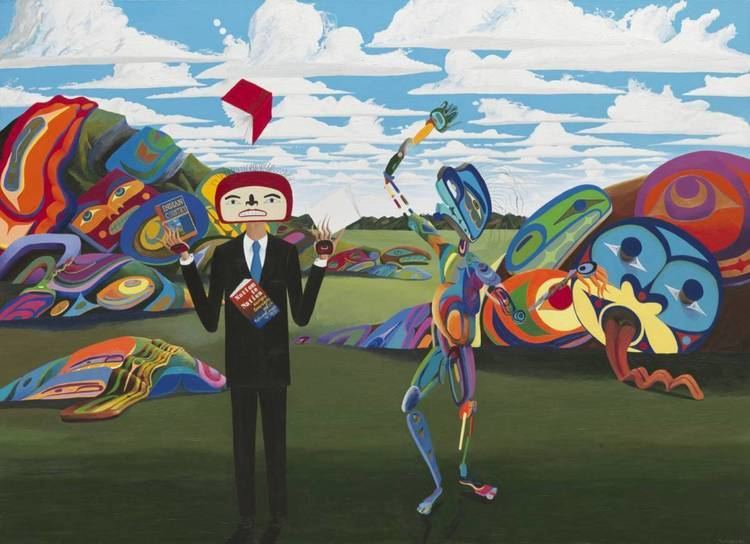 | ||
Lawrence paul yuxweluptun unceded territories
Lawrence Paul Yuxweluptun is a Canadian First Nations artist. His paintings use elements of First Nations imagery and surrealism, and explore issues such as environmentalism, land ownership, and Canada's treatment of First Nations peoples.
Contents
- Lawrence paul yuxweluptun unceded territories
- Rockburn presents lawrence paul yuxweluptun
- Early life
- Technique and style
- Themes
- Paintings
- References
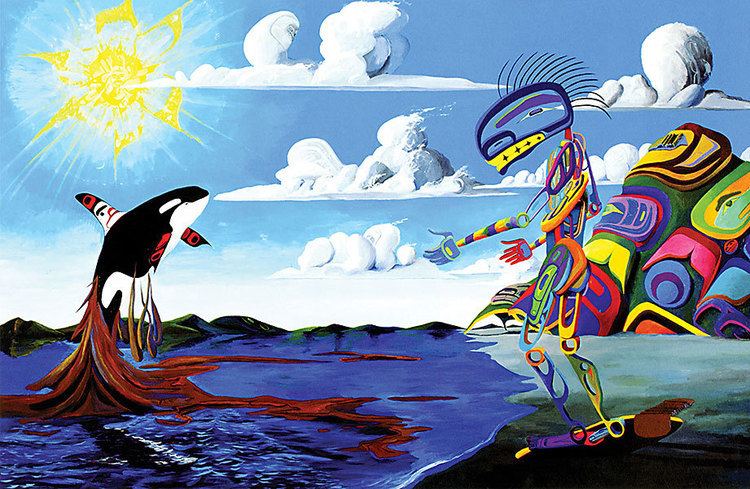
Rockburn presents lawrence paul yuxweluptun
Early life
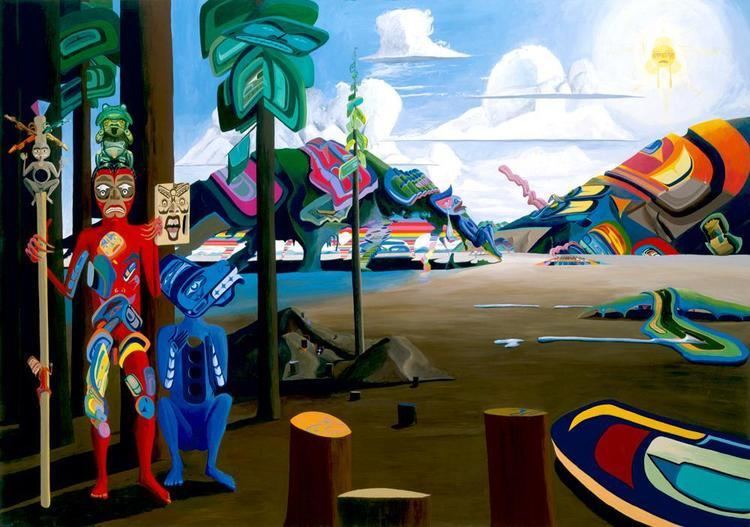
Yuxweluptun was born in Kamloops, British Columbia in 1957, and grew up in Vancouver. His father is Coast Salish and his mother is from the Okanagan region. Both of his parents were politically active; his father was a member of the North American Native Brotherhood, and a founder of the Union of British Columbia Indian Chiefs, while his mother led the Indian Homemakers Association of British Columbia. His name means "man of many masks", and was given to him in his adolescence by the Sxwaixwe Society. He attended the Emily Carr Institute of Art and Design in the late 1970s and early 1980s.
Technique and style
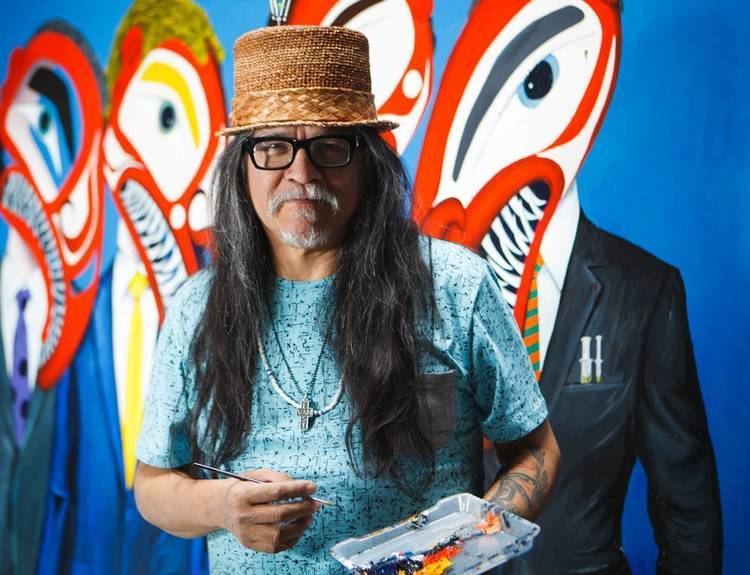
Yuxweluptun works primarily in painting, but has also created multimedia works. Many of his pieces show elements of Surrealism, including similarities to the melting objects in Salvador Dali's paintings. His work incorporates traditional elements from northwest First Nations art, as well as evocations of the Canadian landscape painting tradition, such as the Group of Seven.
Themes
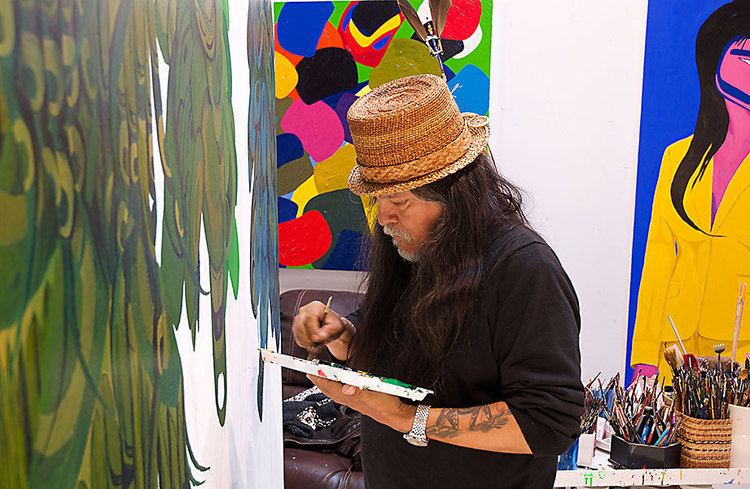
Environmental issues are often central themes in Yuxweluptun's work. His paintings have overtly political statements and titles, and often highlight land use and land ownership issues. Generally, Yuxweluptun's paintings are described as "provocative"; for example, his multimedia piece Residential School Dirty Laundry illustrates a cross made out of children's underwear with red paint to represent blood, and references the treatment of First Nations children in the Canadian residential school system.
Paintings
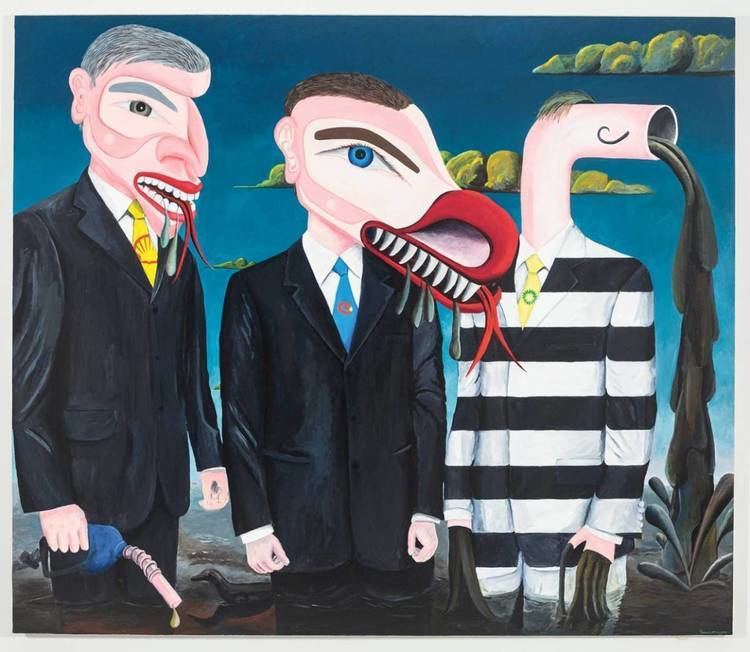
One of Yuxweluptun's earlier pieces, the 1984 work Haida Hot Dog, comments in pop-art style on the commodification of First Nations, and particularly Haida, artwork.

